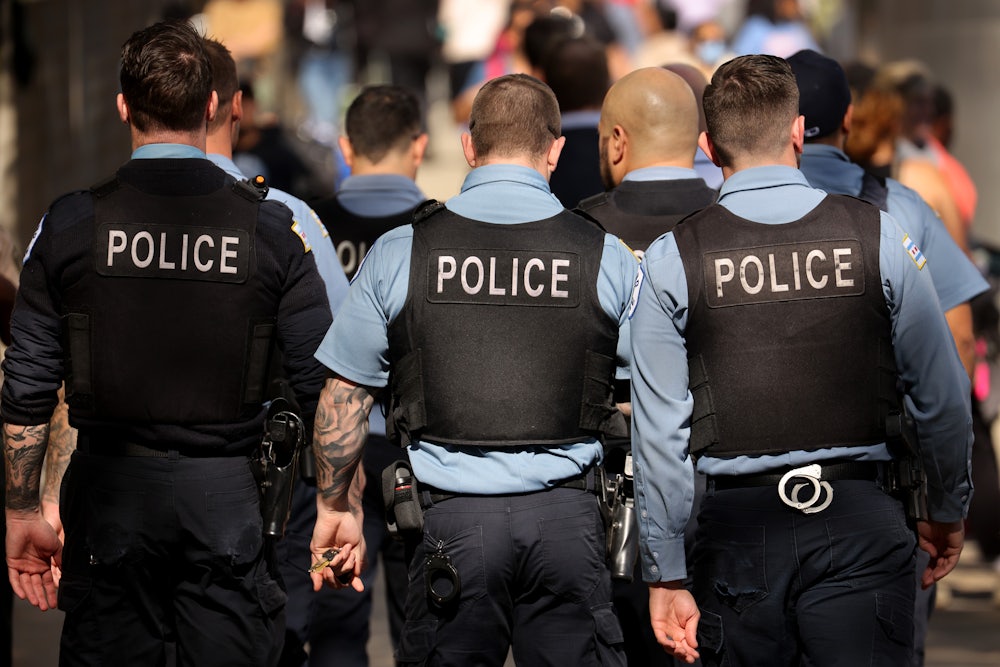The latest phony overdose via so-called “fentanyl exposure”—a bogus epidemic that’s supposedly raged for five years, primarily among cops—included a few telling details you may have missed. In the newest story, a Kentuckian mother of six picked up a dollar from a gas station floor and was instantaneously struck by an alarming array of symptoms that left her and her helpless onlooking husband in fear for her life. Briefly, perhaps, he even feared for his own: The powder the couple insisted must have dusted the banknote was apparently so potent that he too developed symptoms after touching his ailing, contaminated wife. The story quickly went viral—with news outlet after news outlet publishing this version of events.
But that’s not exactly what happened. Nearly every outlet that mined the harrowing anecdote for clicks—mostly local news sites and the trash-tier aggregators that choke your browser with pop-up ads—left out a few throwaway lines from the original Facebook post. After getting back into the car post–bathroom break, the Kentucky mom wrote, “I told my husband how lucky I was to find a random dollar. Then I grabbed a wipe to wipe off my hands [because] I remembered him telling me not to pick up money off the ground as people have been putting it in fentanyl. As he began to somewhat lecture me [it] hit me like a ton of bricks.” In other words, she was in no distress at all until she suddenly remembered warnings about fentanyl-laced bills, a fear presumably accentuated by her spouse’s admonishment. Her symptoms were psychosomatic, triggered by the belief that she was just targeted by an immaculate poisoning. And would it surprise you to learn that her husband works in law enforcement?
Fentanyl exposure is what’s known as a mass sociogenic illness, an erroneous diagnosis that spreads socially, also sometimes referred to as “mass hysteria.” That police keep entertaining this delusion is troubling—not for their sake but for ours. That the phenomenon is apparently impervious to years of widespread medical debunking illustrates just how set apart from the rest of us our cops really are.
Mass sociogenic illness is a common, fascinating, and misunderstood phenomenon. Such outbreaks have deep historical roots: Examples include dancing manias that erupted among peasants in medieval Europe; mysterious bouts of meowing among cloistered nuns; and more recently, a cluster of involuntary tics at a New York State high school.
Medical sociologist Robert Bartholomew says these incidents can be thought of as a collective stress response, typically spreading within a relatively insulated community on high alert. Because media coverage heightens awareness and fear of these plagues, it can also heighten social contagion—which perhaps explains why mass sociogenic illness appears to have risen in recent years. When media attention dissipates, so too do case numbers. This pattern certainly bore out when a cluster of high school students in LeRoy, New York, developed Tourette’s-like symptoms in 2011: Contagion and severity appears to have crested as the cases attracted national attention, medical research, and a high-profile investigation by environmental advocate Erin Brockovich—but gradually dwindled once news cameras left. This was also arguably the case with the Havana syndrome, a recent mass sociogenic illness that spread largely among national security professionals. Initially reported by U.S. and Canadian diplomats, it soon spread to diplomats in other countries. The number of reported cases spiked in 2021, fueled by histrionic media coverage supposing the symptoms were caused by mysterious microwave weapons. Cases declined once the story finally lost purchase among reporters.
But unlike the strange tics in LeRoy or the headaches in Cuba, cop fentanyl hysteria has never attracted much in the way of medical or journalistic buy-in. While law enforcement officials have claimed symptoms stemming from fentanyl exposure hundreds of times since 2017, the possibility has been repeatedly, thoroughly shot down by medical professionals from the get-go. As the headline of a story by emergency physician Jeremy Faust put it over five years ago, “The Viral Story About the Cop Who Overdosed by Touching Fentanyl Is Nonsense.” The American College of Medical Toxicology released an official statement shortly after that story, declaring the risk of toxicity from incidental exposure to be virtually nonexistent. Experts quoted in The New York Times, Vox, Stat News, Detroit Free Press, Columbia Journalism Review, and countless other publications have similarly debunked the idea of fentanyl exposure. In the years I’ve followed this phenomenon, I can’t recall ever seeing a credible outlet or reporter treat it as anything less than ludicrous.
Despite the complete lack of media or medical buy-in, cops keep getting the vapors at the mere mention of fentanyl. That social transmission appears to be unaffected by this reality reveals how insulated police are from the rest of society: a disturbing but unsurprising insight about an armed force that has fought hard to evade public accountability, vehemently defends its members at the expense of those it’s allegedly tasked to protect, and even flies its own flag.
However much cold water is repeatedly dumped, fentanyl fan fiction continues going viral over and over again. And stories like the Kentucky woman’s—or stories posted on police stations’ social media pages—continue to rack up likes. One recent study even showed that people whose B.S. detectors aren’t fooled by nonsense still share it anyway, if the general vibe comports with their side. And small local outlets, so starved for resources that they do little more than monetize prepackaged viral material or so craven that they see no reason not to, continue to blast this junk out to the masses and get schooled by doctors reiterating, for the umpteenth time, that if you really could overdose by touching a drug, then no one would ever inject it.
As journalist Zachary Siegel has written, the ultimate victims here are people who use drugs—who have been built up as so hazardous to police health that unjustified retribution seems likely for many. When a fentanyl user and a police officer meet, one of them really does have the power to ruin the other one’s life. And it takes a bout of hysteria to forget which one’s which.






